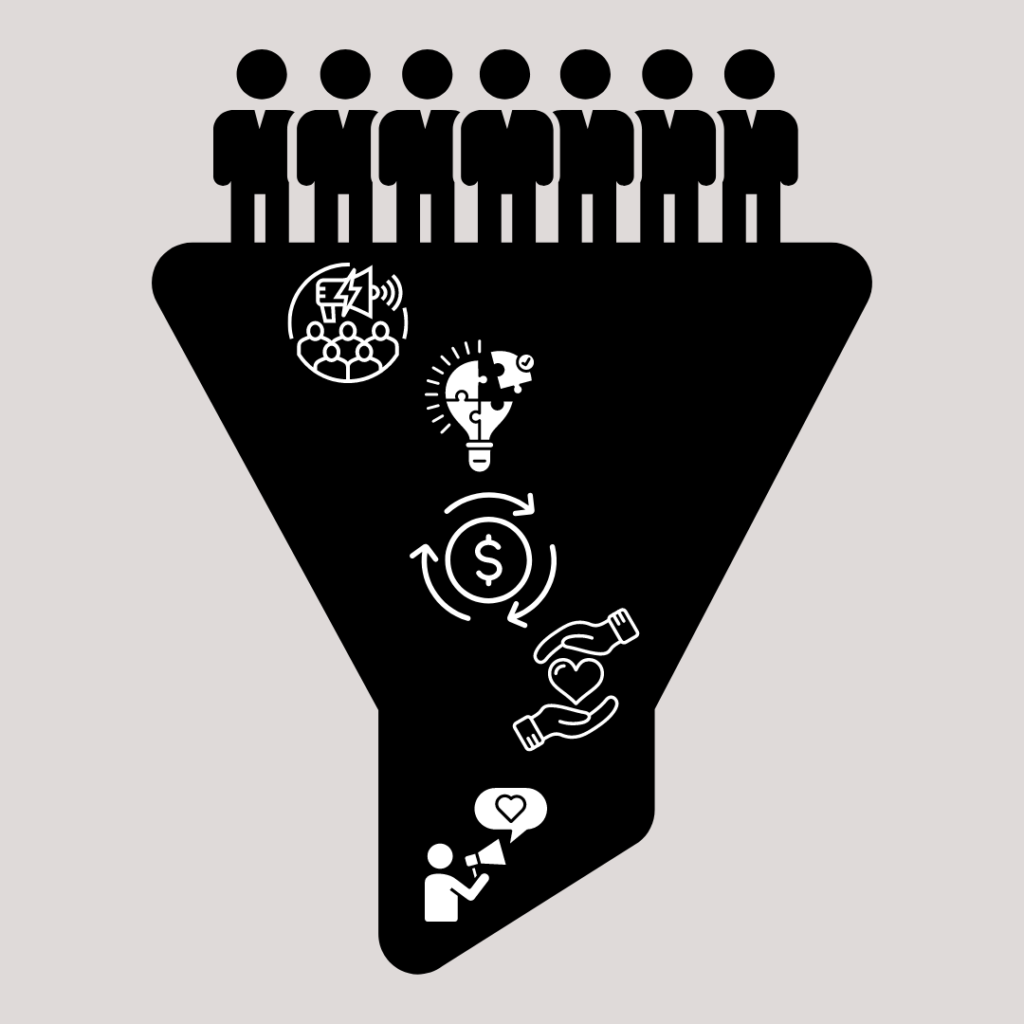
A sales funnel is more than a diagram—it is a disciplined way of thinking about how strangers become loyal customers
By mapping each step of that journey, marketers gain clarity on where attention drifts, where curiosity ignites, and where decisive commitment finally happens. The funnel’s tapered shape reminds us that outreach always exceeds outcomes: many will notice, fewer will explore, fewer still will buy. Accepting this mathematical truth early prevents wishful forecasting and forces resource allocation where it matters most.
At the top of the funnel sits awareness, the wide mouth where brands first intersect public consciousness. Casting messages broadly here is rational because precision is impossible when people do not yet know they have a problem, much less that you offer the cure. Metrics focus on reach and recall, treating impressions as seeds rather than sales slips. Without this stage, later tactics feel like whispering in an empty room.
Interest follows, a narrower band where curiosity demands substance over spectacle. Visitors linger on product pages, download white papers, or attend webinars because they want proof of credibility. Content at this level earns trust piece by piece; sophisticated analytics reveal which narratives move the dial so marketing departments can amplify what resonates and retire what falls flat.
Consideration is the crucible where prospects weigh you against alternatives. Here the funnel’s discipline is invaluable. Tracking open rates on comparison guides or demo-request timelines exposes friction that might otherwise remain invisible. Small improvements—streamlined forms, clearer pricing, faster follow-up—compound dramatically because each incremental gain lifts everyone still progressing.
Conversion, the famed bottom of the funnel, is where cash registers ring, yet the funnel thinking does not stop at the swipe of a card. Understanding the prior path tells sales teams which objections remain unresolved and equips customer success teams to deliver onboarding that feels pre-emptively intuitive. Revenue arrives more smoothly, churn drops, and lifetime value climbs because the business stayed mindful of the entire sequence that led here.
Retention and advocacy complete the cycle, flipping the narrow end outward again as satisfied buyers introduce new names to the top. This continuity proves the funnel is not a static shape but a breathing system. Companies that monitor post-purchase sentiment and encourage referrals effectively widen awareness without paying cold-audience prices.
Using a sales funnel is therefore reasonable for three overarching reasons: it clarifies priorities, concentrates investment, and creates an evidence loop that sharpens strategy over time. Absent this framework, marketing devolves into isolated tactics whose performance cannot be compared or compounded. With it, every blog post, ad placement, and follow-up email connects like gears in a well-oiled machine, guiding prospects along a path the business understands in granular detail.
In short, the sales funnel replaces guesswork with guided progression, turning marketing from hopeful broadcasting into intentional relationship building—and that discipline is the difference between sporadic wins and scalable growth.
